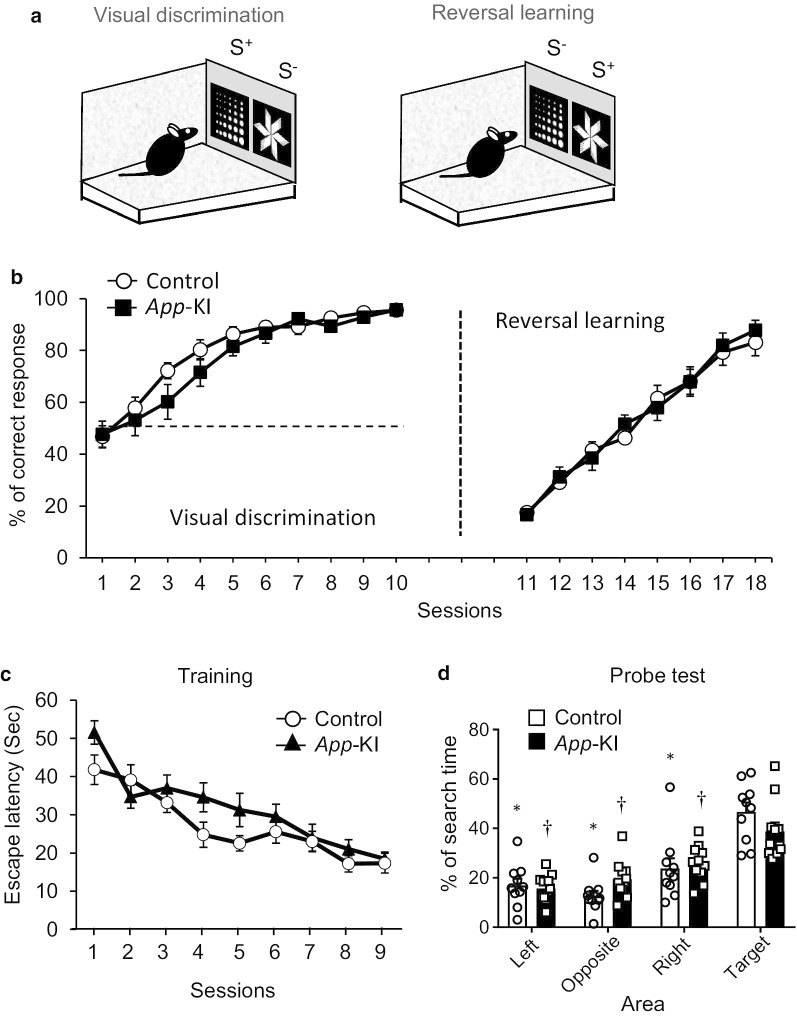Fig. 3.
App-KI mice exhibit no changes in cognitive flexibility or reference memory. a, b Visual discrimination, reversal learning in the touchscreen-based operant system. a Diagram representing visual discrimination and reversal learning. b Behavioral performance of 4–5-month-old mice in both tasks. Data are presented as means ± SEM (n = 10–11). Chance performance (50%) is indicated by dashed lines. c, d Reference memory in Morris water maze test. c In 6-month-old mice, escape latency was measured during a 60-s session in the water maze test. d Spatial memory of a platform’s location during the training phase was tested in the probe test. Percentage of time spent in each quadrant was measured. Data are presented as means ± SEM (n = 10–11). *p < 0.05 vs target in WT mice (Tukey test for multigroup comparisons). †p < 0.05 vs target in App-KI mice (Tukey test for multigroup comparisons)

